Views: 47 Author: Site Editor Publish Time: 2024-10-30 Origin: Site








ARTang is China’s one-stop solution provider for electromagnetic flow meter manufacturer a variety of sizes, materials, and linings to meet customer needs.
Electromagnetic Flow Meter is widely used for the flow measurement of conducting fluids. These are used for the measurement of drinking water as well as wastewater applications, any dirty liquids that are conductive or water-based, raw water, etc. The sensor works on Faraday’s Law of Electromagnetic Induction. The new sensors are more compact in size and more sensitive. Earth ring or earth electrode: both options are available. Empty tube detection is also provided. The transmitter complies with IP67 & Sensor complies with IP68.
ARTang is a electromagnetic flow meter manufacturer with full in-house capabilities to produce, assemble, test, and calibrate every flow meter. Few flow meter manufacturers can offer this level of expertise.
Some types of electromagnetic flow meters ARTang produces include full-bore electromagnetic flow meter, insertion magmeter, wafer electromagnetic flowmeter, sanitary/food-grade magnetic flow meter, remote mag meter, and battery-powered electromagnetic flow meters.
PTFE liners are used at high-temperature liquid measurement applications up to 150°C. They are also used for toxic liquids like strong acids or other corrosive liquids.
PFA liners can withstand extremely high temperatures up to 200°C and are primarily used in sanitary electromagnetic flow meters for the food and beverage industry. With the appropriate hardness, PFA liners are also suitable for abrasive slurries.
Our FDA-certified electromagnetic flow meters require PFA liners made from FDA-approved materials, specifically following the FDA regulation 21 C.F.R. 177.1550. In China, ARTang’s competitors lack 3A certification and use non-FDA-approved liner materials, resulting in lower costs. We are the only manufacturer in China to produce sanitary electromagnetic flow meters with 3A food-grade certification. PFA materials without FDA approval may leach harmful substances under high-temperature sterilization and prolonged use, posing a risk to food safety.
Hard rubber liners are suitable for raw water containing sand and quartz particles and must have the right hardness to significantly reduce wear.
Neoprene rubber is typically used for drinking or purified water.
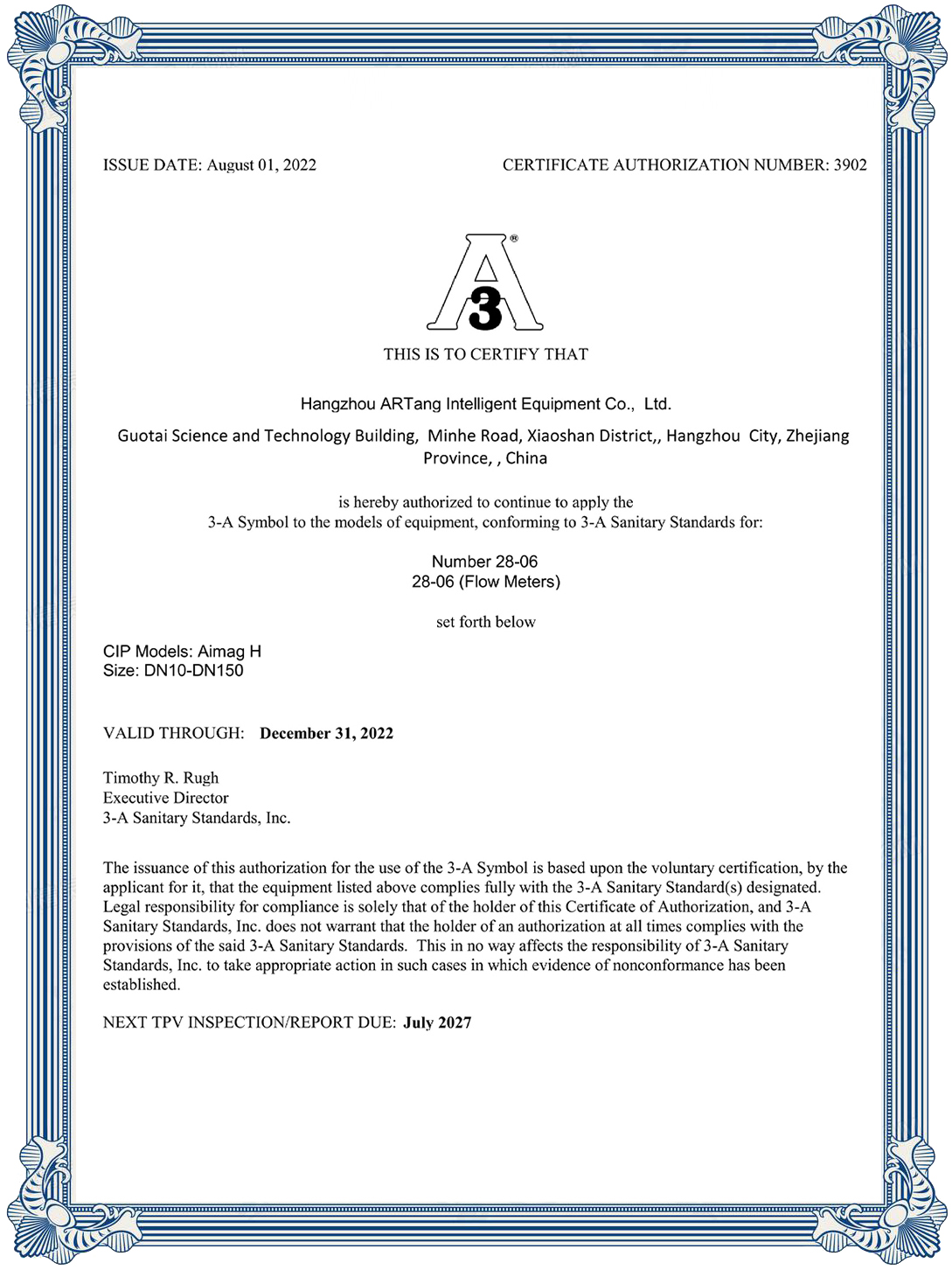
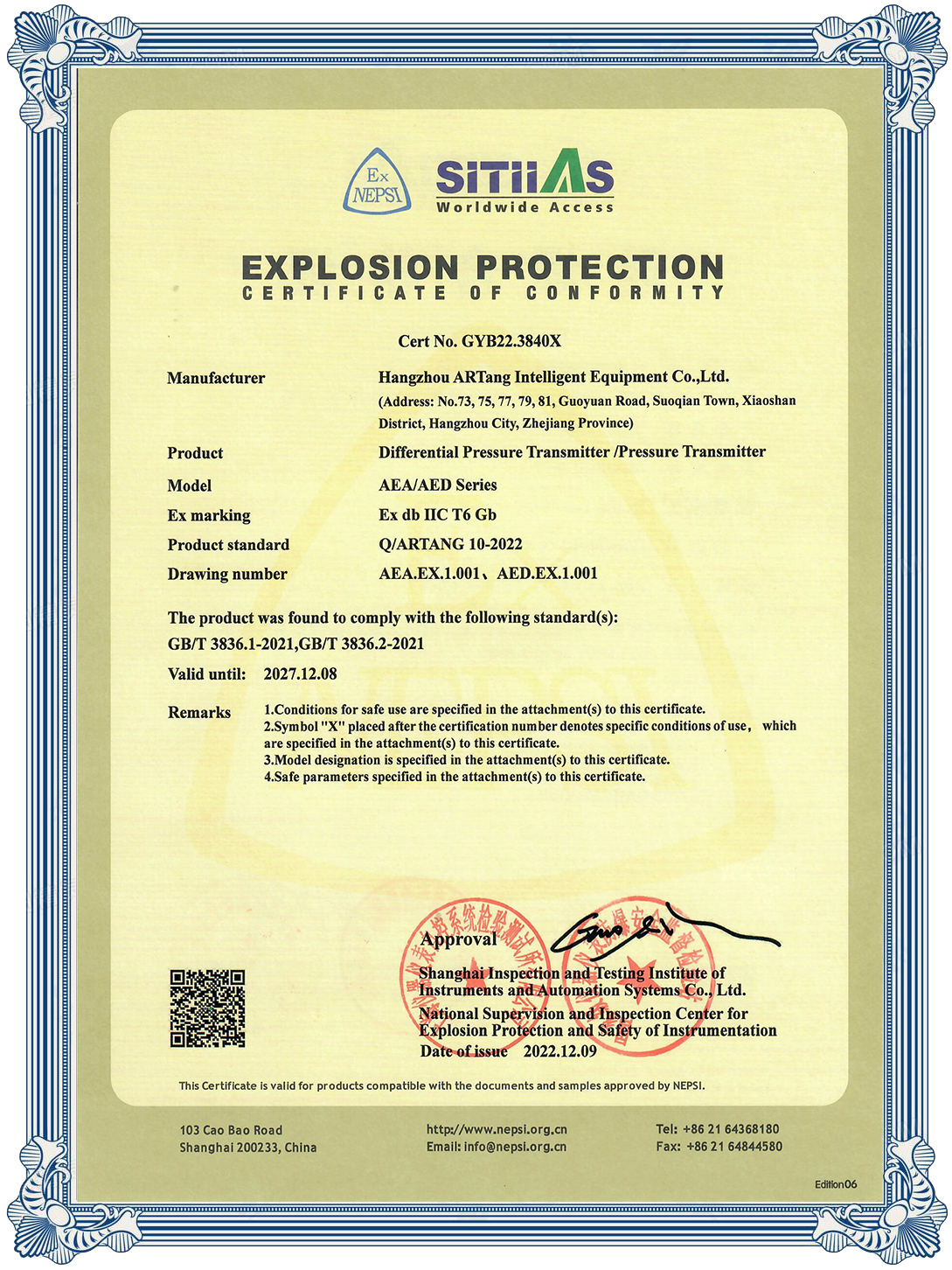
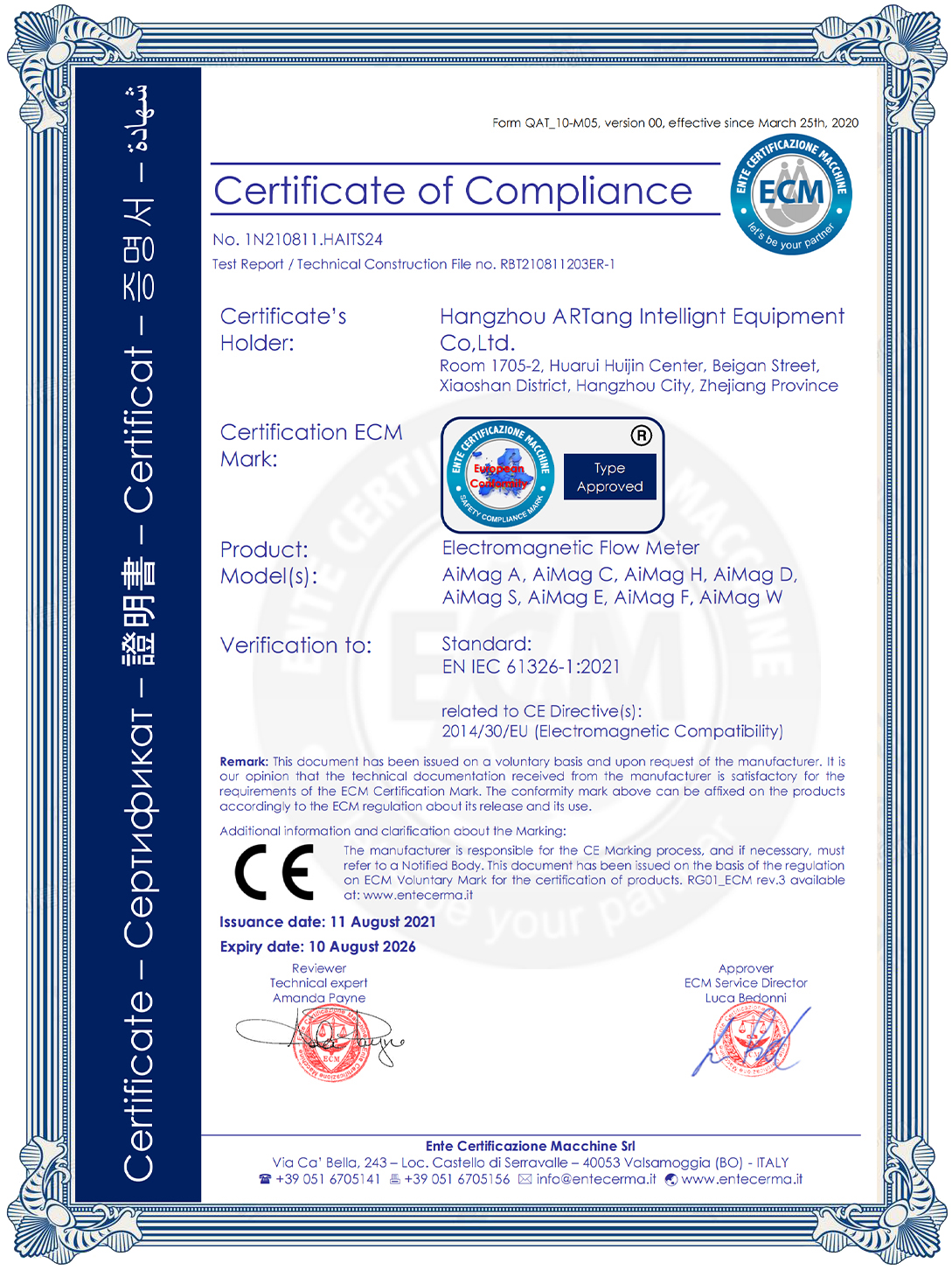
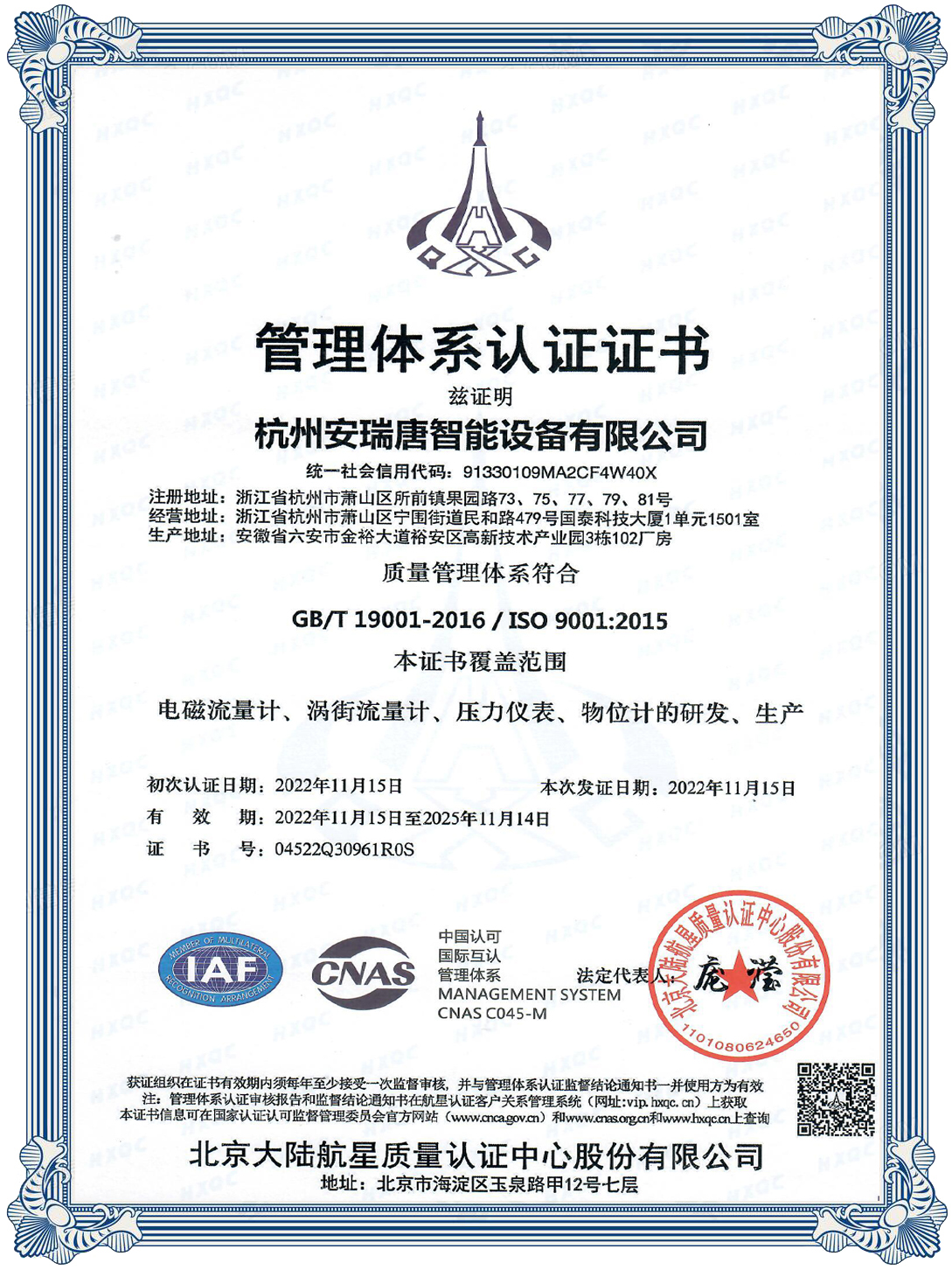
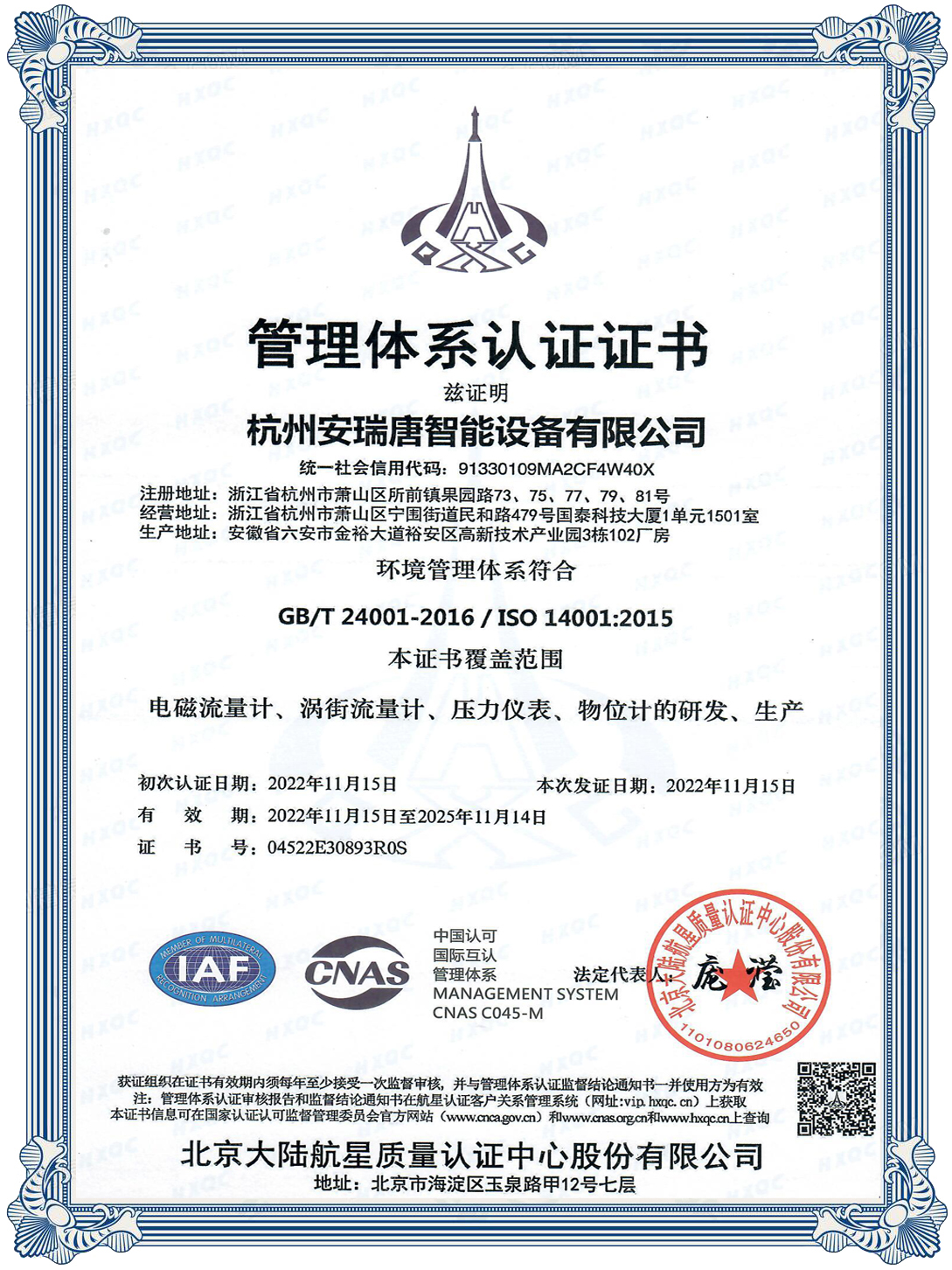
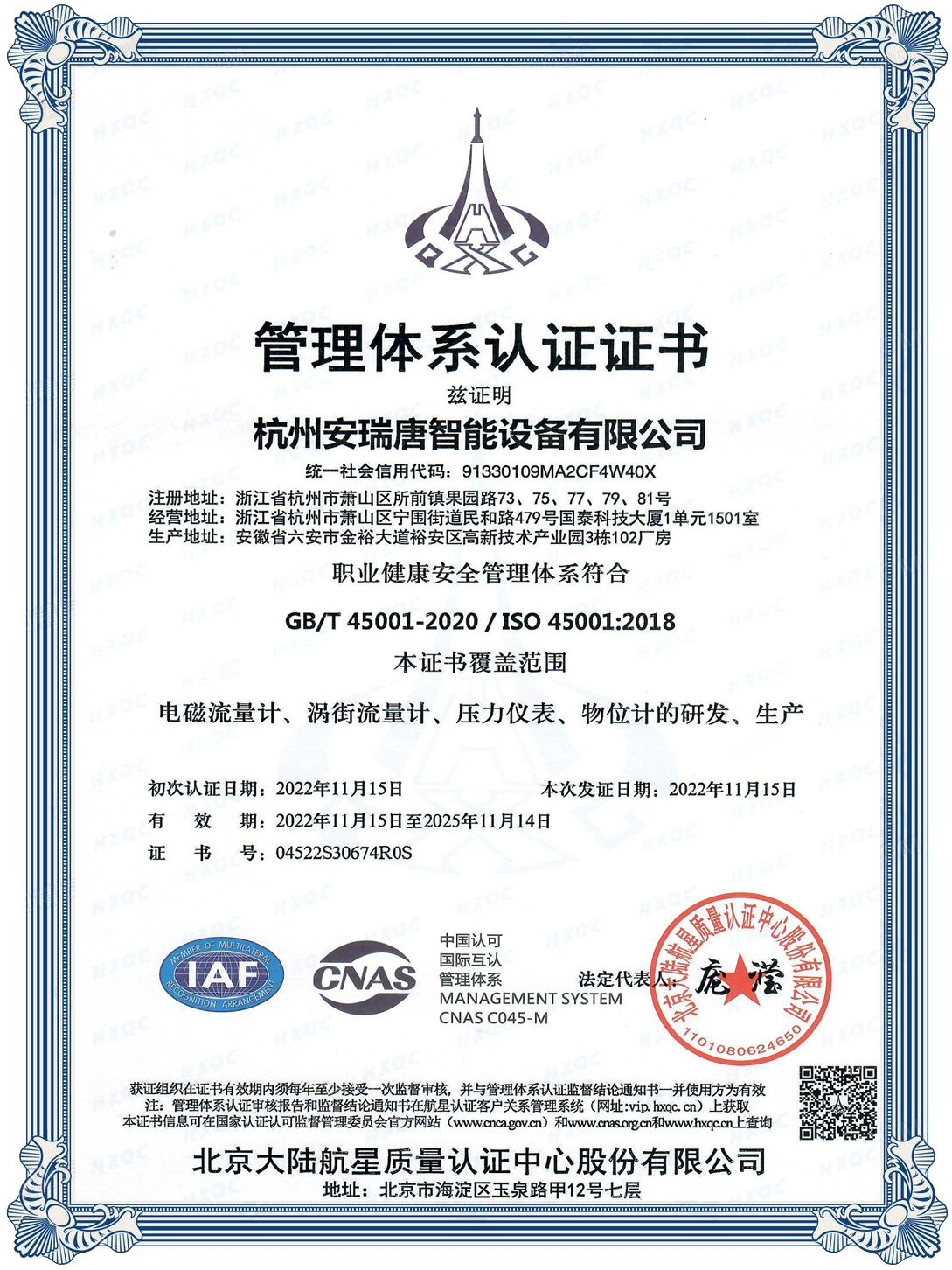
The measuring tube has no obstructive parts, resulting in zero pressure loss and low requirements for straight pipe sections.
This series offers nominal diameters from DN6 to DN2200, with various options for sensor liners and electrode materials.
It is compatible with nearly all corrosive and non-corrosive liquids, making it a popular choice in the process industry.
The measurement results are unaffected by changes in density, viscosity, pressure, temperature, solid impurities, or conductivity (above 5 µs/cm), making it one of the most versatile flow meters.
The transmitter can be combined with the sensor in an integrated design or a separated configuration.
The flow meter supports bidirectional measurement and includes three built-in totalizers: forward, reverse, and net totals. It displays forward and reverse flow and provides multiple output options, including current, pulse, digital communication, HART, and RS485 protocols.
The transmitter uses Surface Mount Technology (SMT) and has self-checking and self-diagnostic functions.
Explosion-proof models are suitable for use in designated hazardous locations.
A magnetic flow meter can be installed vertical, horizontal, or at an angle specifc to the place of installation. Always choose the right installation location as per your industrial requirement.
Always install it away from a strong magnetic feld or other electrical interference devices.
Fix the pipeline that has substantial vibration resources.
Open the package and inspect every element to check its accuracy.
Always install the meter in the direction of the arrow to allow flow in the forward direction.
Perform zero-point calibration to measure electromagnetic flow in the medium accurately.
Follow these simple points to select the right type of magnetic flow meter to meet your industrial reguirements.
Determine your budget
Determine the cost of instrument installation and subsequent maintenance
Determine the type of fluid suitable for operation
Determine operating pressure, temperature, flow rate, viscosity, and conductivity
Determine the line size, injection point, valve for modulation, and fow rate measurement
Additionally, you can contact our experts to choose the right type of magnetic flow meter suitable for your industrial applications. Please visit our website or call us to get more information about high-performance magnetic flow meters.
1. Product Quality and Accuracy
Accuracy and Stability: The core of a flow meter lies in its measurement accuracy and stability. Choose products that apply advanced technology, offering high precision and reliable stability.
Material Selection: Pay attention to the materials used, such as stainless steel or aluminum alloy, as they greatly impact durability, corrosion resistance, and overall cost.
2. Technical Strength and R&D Capability
R&D Team: Evaluate whether the manufacturer has a professional research and development team, as well as the background and experience of its members.
Technological Innovation: Review the manufacturer’s ability to innovate in the field of flow meters, such as whether they hold proprietary patents or other intellectual property rights.
3. Manufacturing Capacity and Scale
Production Scale: Evaluate the manufacturer’s production capacity, including the number of production lines, the advancement of equipment, and annual output.
Delivery Capability: Understand the manufacturer’s lead times and capacity assurance to ensure they can meet your purchasing needs and deliver on schedule.
4. Market Reputation and Brand Credibility
Customer Reviews: Check user feedback, case studies, and testimonials to understand how other customers evaluate the manufacturer. Such reviews provide a direct reflection of product quality, service level, and overall market reputation.
Brand Recognition: Choose brands with strong market recognition and credibility, as they often offer more comprehensive service systems and more reliable product quality.
5. After-Sales Service and Support
Technical Support: Determine whether the manufacturer provides comprehensive technical support, including product selection, installation and commissioning, and troubleshooting. Strong technical support ensures that any issues encountered during use can be resolved promptly.
After-Sales Service System: Assess whether the manufacturer has a well-established after-sales service system, including response time, repair coverage, and spare parts availability. Quality after-sales service can reduce operating costs and extend the lifespan of your equipment.
In conclusion, when selecting an electromagnetic flow meter manufacturer, you should take into account multiple factors, including product quality, technical strength, manufacturing capacity, market reputation, and after-sales support. By comparing the strengths and weaknesses of different manufacturers, you can choose the one that best meets your needs and ensure the procurement of high-quality, high-performance electromagnetic flow meters.
About ARTang
ARTang is a global leader in measurement instrumentation, services and solutions for industrial process engineering that energizes the transformation of society and industry to achieve a more productive, sustainable future. We provide process solutions for flow, level, pressure, analytics and digital communications, optimizing processes in terms of economic efficiency, safety & environmental impact.
